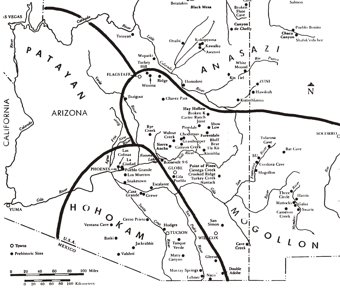 ClayHound Web
- Patayan
Pottery
ClayHound Web
- Patayan
PotteryReturn to:
|
PATAYAN POTTERY |
|||
Patayan Culture
The final Patayan Phase III began around A.D. 1500, in the Protohistoric period, and was marked by relative continuity in ceramics. Some Patayan II ceramic traits persisted, and new traits included reinforced rim bands and a new vessel form, the high neck, small-mouthed olla. Material culture of the Patayan III period shows continuity with Quechan (Yuma) material, suggesting a cultural continuum. http://www.luke.af.mil/rmo/pre.htm |
|||
|
Excellent information from the Logan Museum of Anthropology on line from Beloit, Wisconsin |
|||
|
All text and images are used courtesy
of the Logan Museum of Anthropology, Beloit College |
|||
|
|
|||
|
The Patayan culture is represented by various San Francisco Mountain Gray Ware types. San Francisco Mountain Gray Ware San Francisco Mountain Gray Ware is found in northwestern Arizona, between Kingman and the Grand Canyon. This ware is typically associated with the Cohonina branch of the Patayan culture, which had roots in common with the Anasazi, but gradually differentiated itself into several culture units.
Material: The clay is gray to brown,
micaceous sand temper
From: http://www.beloit.edu/~museum/logan/southwest/patayan/patayan.htm |
|||

